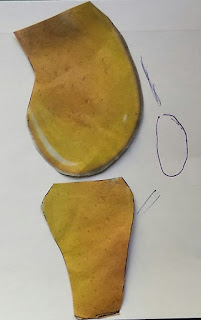Q. To clinically assess the below case to rule out neurological involvement , what should be done?
a. Press the tibia
b. test for Babinski sign
c. Stroke the sole
d. Achilles tendon reflex
Answer -
c
The deformity appears to be bilateral clubfeet in the given picture.
Plantar stimulation of the feet can be done to check neurological status in a clubfoot.
Lack of dorsiflexion of the toes and resting position in plantar flexion, i.e. “The Drop Toe Sign,” indicates a neurological etiology of the clubfoot deformity.
a. Press the tibia
b. test for Babinski sign
c. Stroke the sole
d. Achilles tendon reflex
Answer -
c
The deformity appears to be bilateral clubfeet in the given picture.
Plantar stimulation of the feet can be done to check neurological status in a clubfoot.
Lack of dorsiflexion of the toes and resting position in plantar flexion, i.e. “The Drop Toe Sign,” indicates a neurological etiology of the clubfoot deformity.











